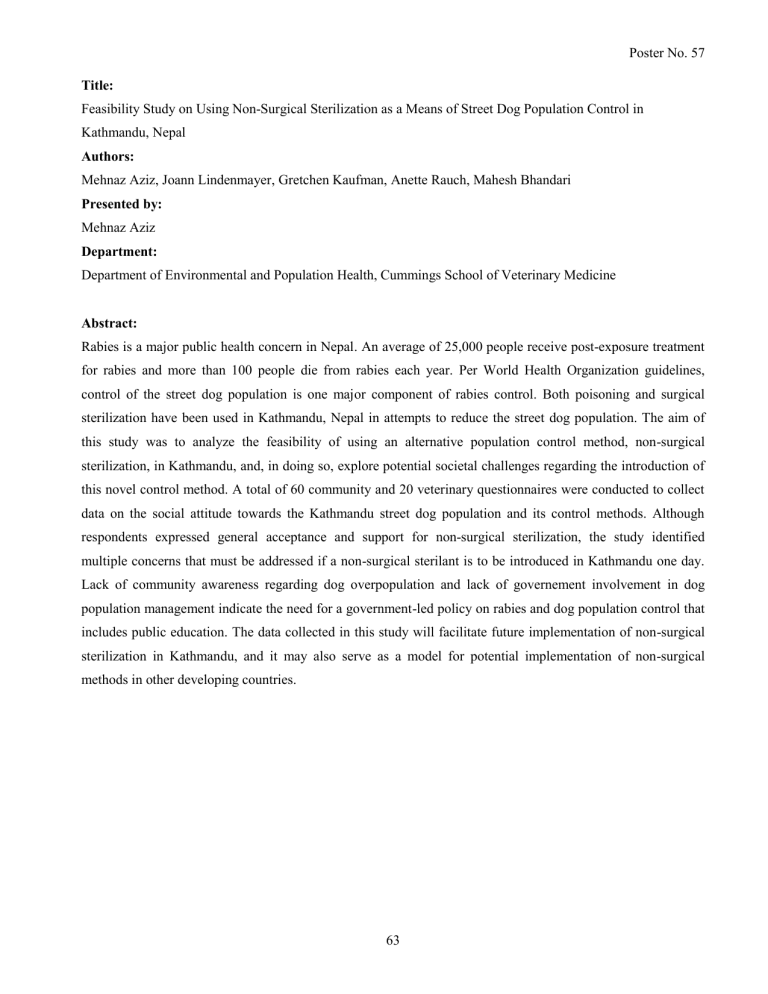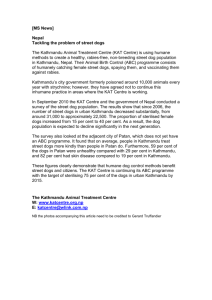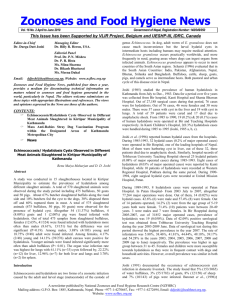Feasibility Study on Using Non-Surgical Sterilization as a Means of

Poster No. 57
Title:
Feasibility Study on Using Non-Surgical Sterilization as a Means of Street Dog Population Control in
Kathmandu, Nepal
Authors:
Mehnaz Aziz, Joann Lindenmayer, Gretchen Kaufman, Anette Rauch, Mahesh Bhandari
Presented by:
Mehnaz Aziz
Department:
Department of Environmental and Population Health, Cummings School of Veterinary Medicine
Abstract:
Rabies is a major public health concern in Nepal. An average of 25,000 people receive post-exposure treatment for rabies and more than 100 people die from rabies each year. Per World Health Organization guidelines, control of the street dog population is one major component of rabies control. Both poisoning and surgical sterilization have been used in Kathmandu, Nepal in attempts to reduce the street dog population. The aim of this study was to analyze the feasibility of using an alternative population control method, non-surgical sterilization, in Kathmandu, and, in doing so, explore potential societal challenges regarding the introduction of this novel control method. A total of 60 community and 20 veterinary questionnaires were conducted to collect data on the social attitude towards the Kathmandu street dog population and its control methods. Although respondents expressed general acceptance and support for non-surgical sterilization, the study identified multiple concerns that must be addressed if a non-surgical sterilant is to be introduced in Kathmandu one day.
Lack of community awareness regarding dog overpopulation and lack of governement involvement in dog population management indicate the need for a government-led policy on rabies and dog population control that includes public education. The data collected in this study will facilitate future implementation of non-surgical sterilization in Kathmandu, and it may also serve as a model for potential implementation of non-surgical methods in other developing countries.
63









